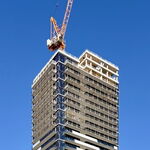C_Johnson_1995
Active Member
I agree. This is such a weird time to go all in on this concept when you've just about done or committed to do everything to avoid needing to do it.After reading this release, I'm concerned about what this means for the Kitchener line, among other projects. It seems we're in a constant state of, "yes, no, maybe so" because we have Metrolinx either getting projects closer to completion, shelving projects for whatever reason, committing to projects, but taking years to ever get shovels in the ground, and as a consequence, the projects taking much longer due to inflation, among other systemic issues that have plagued Metrolinx for years, if not decades.
It feels like nobody is learning that the more we push projects further down the road, the more things cost, the more resources that are involved, the more Metrolinx, their subsidiaries, and other stakeholders have to delegate and make changes because of other construction projects that ended up receiving approval, or being constructed while transit projects were shelved. It's a recipe for disaster if Metrolinx is not out in the community actually doing research on what is happening, and is instead steamrolling other projects just because they're a government agency and suddenly have a sense of urgency for a few weeks.
An example of this is downtown Brampton along Railroad Street. I can't find the document right now, but there's a proposed project for three highrises that was supposed to be starting sometime within the next year or two. Due to the need for an additional track or two along that exact corridor, along with the proper buffer, the new proposal is to instead change the orientation of the highrises, and instead of constructing three, they construct two.
That being said, I have no idea what the future holds, or if this missing link will even be constructed. I don't see any business use case that will make CN/CPKC want to use anything that Ford/Metrolinx will propose if it takes them so far out of the way and as a result extends their fuel, crew time, and so on. I can understand that CN was at one point a crown corp, and Ford/Metrolinx may want to use that as leverage, but 1995 was 30 years ago.
This all but confirms to me that he wants an election, but when to do it will be tricky.




